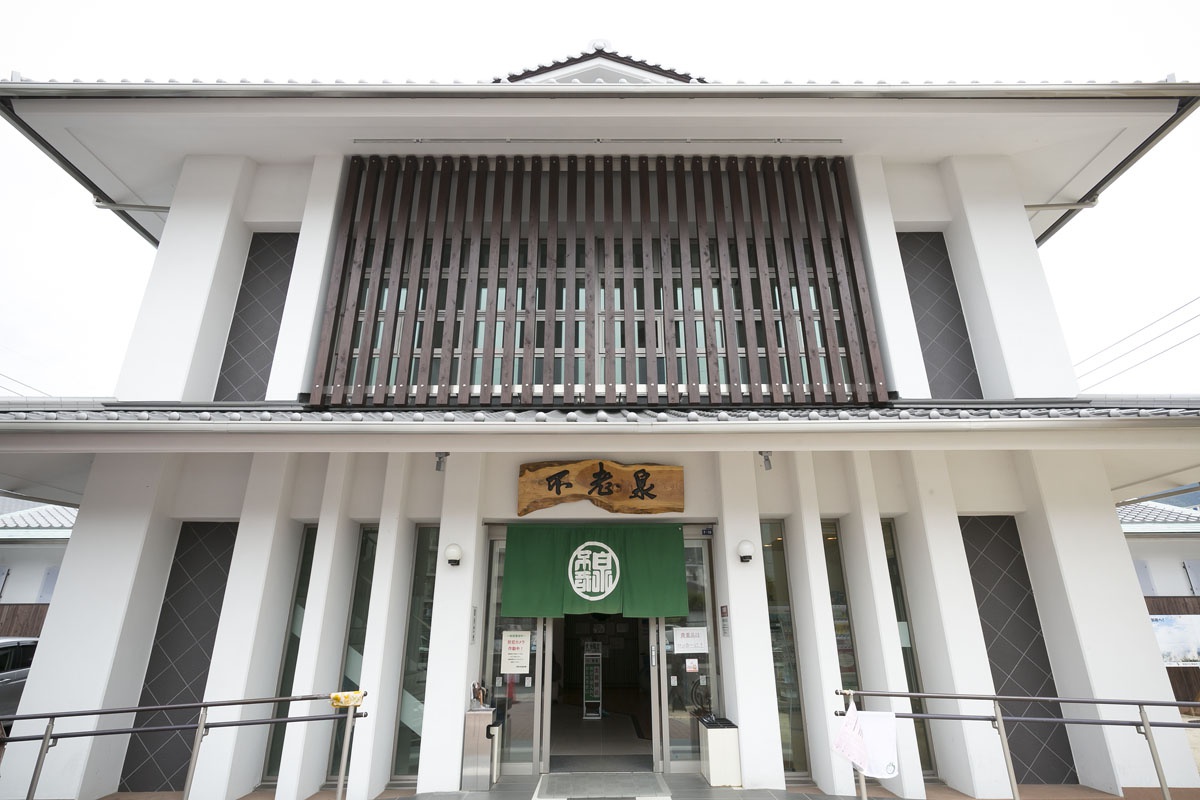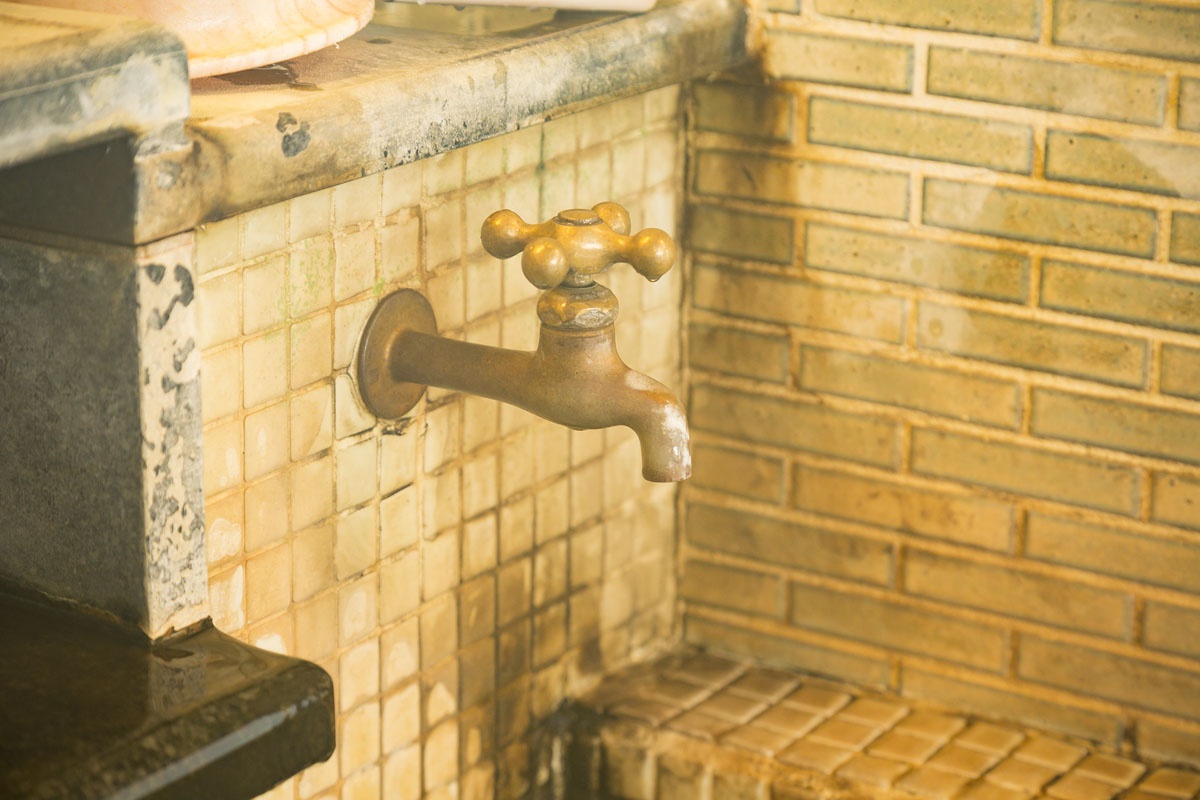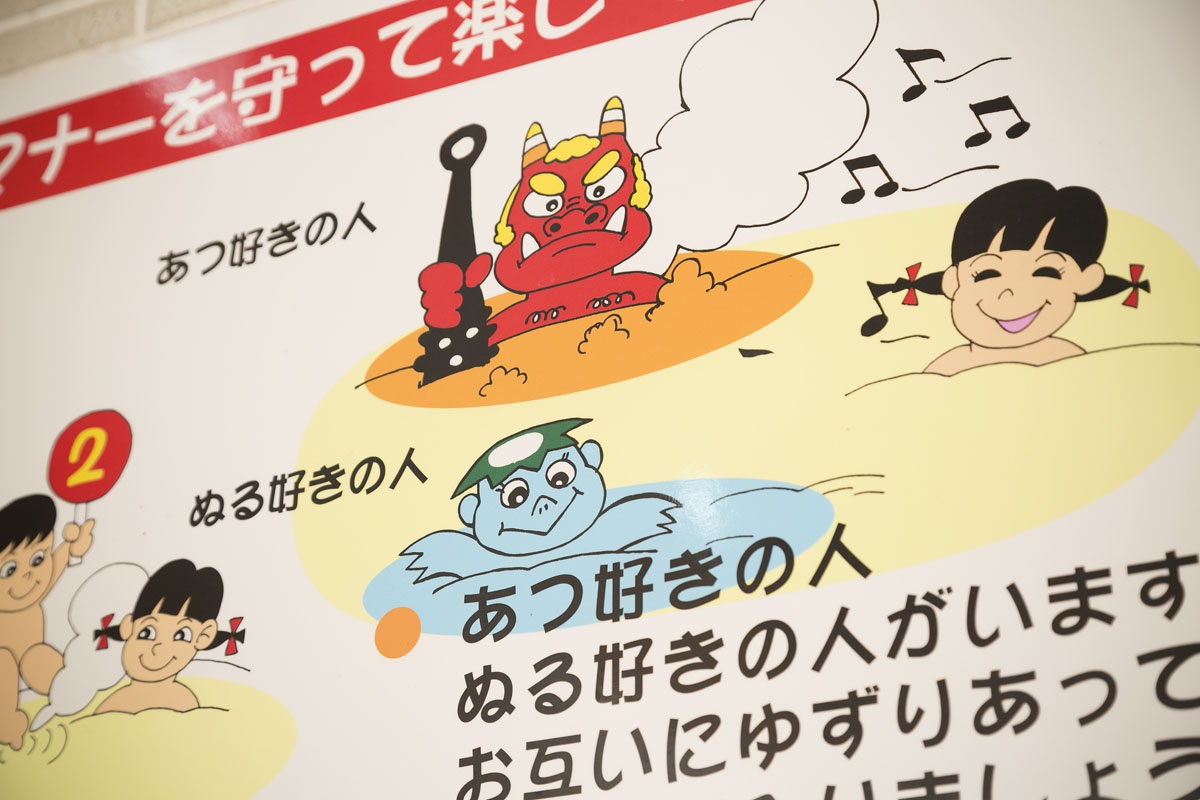Furosen Onsen — the closest publicly managed onsen* to Beppu Station. Morning, noon, or night, this onsen is constantly busy with customers. Often you will see young families who live nearby come to this onsen together, as well as old men and women carrying their wash bowls filled with soap and shampoo bottles.
*An onsen is a public hot spring.

Between the onsen’s plaza and parking lot rests a statue of the Buddhist figure Kṣitigarbha. Neatly arranged in front of the statue are flowers, and it’s clear to see that the local residents of this area take great care of the statue. The statue has a kind face, with a look that suggests he watches over the countless people who come to this onsen seeking warmth.

People first began calling this onsen by the names Furosen and Furoyu during the beginning of the Meiji era (1868-1912). In 1902 a new three story wooden structure with a viewing platform was built on the site of the onsen, a form factor which is still present here today. In those days it was said that people would often gather on the observation deck after enjoying the baths to look over the the Beppu cityscape. At that time there were no tall buildings, so it was possible to see a sweeping, panoramic view of the whole city. In 1921 the onsen was reformed with the addition of a family bath, a waterfall bath, and an electric bath. Even after being rebuilt as a reinforced concrete structure in 1957, this onsen continued to be loved by locals and tourists alike.
I wonder what the city looked like from the observation deck in those days.

The onsen reached it’s current form in 2014. Originally the onsen was constructed such that the baths were accessed by stairs that led to a below-ground level. Now all of the baths are on the ground level, making it much more accessible for the elderly and disabled.
paid the 100 yen bath fee to the receptionist who then said, “The bath in the front is the hot one — the one in the back is warm. Start with the warm bath before you get in the other ones, and enjoy!” At the entrance to the baths you are greeted by a statue which has been part of this building since 1902.

On a posted notice in the dressing room was written, “Washing yourself with water from the bath is Beppu style.” What that means is that there is not one shower in the bath area — visitors gather around the edge of the baths and scoop water over their bodies to get clean. I followed suit and washed up before getting in the warm bath.
Soaking happily in the bath, I began to notice that each person has their own unique way of washing themselves. I guess everybody has their own quirks when it comes to personal hygiene.
After working up some courage I decided to try the hot bath next. The water was even hotter than I imagined, and I could feel my skin tingling from the heat. I would have liked to stay in longer, but I could only take about 30 seconds.

As I was toweling off in the dressing room, an old woman spoke to me. There are three onsens in my neighborhood, but I like to walk here for the exercise. It takes about 15 minutes from my house. I can pick up some groceries along the way too,” she said. I thought it was very Beppu that she chooses the onsen that fits her lifestyle.
“This is the furo* of Furo [onsen],” she said with a laugh as she got her things and left.
*Furo in Japanese means bath, and is a homonym of the Furo in Furosen Onsen.
